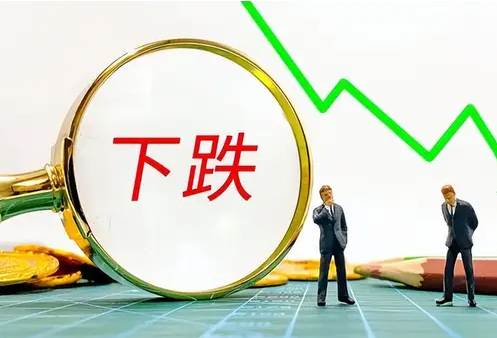At two in the morning, you lie on your bed scrolling through short videos: post-00s college students earning 50,000 a month by writing online articles, housewives making a million a year from handmade crafts, delivery guys becoming internet celebrities by shooting skits… Your finger mechanically swipes up, and anxiety washes over you like a tide. The next day, you inexplicably spend 199 yuan to buy "Beginner's Financial Management Course," sign up for the "Short Video Wealth Training Camp," and even start studying "The Art of War and Live Streaming Sales." Congratulations, you have officially become a "preparatory reserve of leeks" in the new era.
In this age of information explosion, we are not lacking information, but rather the ability to analyze it. Those stories that make your blood boil are all carefully designed bait. This year's bull market is undoubtedly a huge bait as well. I never deny the four-year cycle of bull markets in the crypto space; however, beneath the bull market lie countless bones. Positioning yourself correctly in this year's bull market is far more important than searching for so-called bottom points.
The deadly trap of the internet age: the wealth stories you see are all specimens beautified by a hundred layers of filters. Just like the jade in live streaming rooms is always transparent, but no one tells you that it’s the magic of lighting; the profit screenshots shared in financial courses will never show the traces of photo editing software.
What’s even scarier is that algorithms are intensifying this cognitive slaughter:
- When you search for "bull market," the homepage always pushes "quick bottom-fishing" remedies.
- When you watch crypto videos, ads for "short-term super strategies" immediately flood in.
- When you hesitate slightly, the countdown for "the last 10 spots" starts to press on your nerves.
This is not a conspiracy theory, but the underlying logic of business—excess profits always come from information asymmetry. When you come across "short-term trading tutorials," the information gap in this field has long been flattened. Those who teach you "mindless copying" are merely wrapping the concept of "excess surplus value" from "Capital" in the candy coating of the new era.
As the atmosphere of the bull market begins to crazily squeeze your nerves, this atmosphere is simultaneously destroying two core abilities of ordinary retail investors.
- Deep thinking ability
When "learn short-term trading in 5 minutes" runs rampant, more and more people simplify the complex logic of the crypto space into a production line of "choose a teacher - copy homework - cash out quickly," unaware that the truly profitable players spend twelve hours a day watching the market and news, just to wait for that one second of opportunity to appear. This wait could be a week, a month, or even a year.
- Delayed gratification ability
The slogans and gimmicks of "tripling your investment in three days" and "quick mastery of K-line strategies in ten days" make people lose the patience of "grinding for ten years to forge a sword." If you have already waited four years and are still surviving in the crypto space, then you have already passed the most difficult times. Why rush at this moment, eagerly expecting to become rich overnight and leap across classes? This contradicts basic financial principles; the essence of finance does not create wealth but is a tool for wealth transfer.
Returning to the present, you will also find that the position of 95,500 was already marked by the hunters on Thursday. This area is based on a reasonable argument about the possible trends of the market. The biggest difference between the current market and past markets is that in the past, we could use technology or news to make some predictions based on favorable and unfavorable factors. Even if we couldn't find suitable points, we could have a general understanding of the direction. However, our trouble now is that we cannot see the direction clearly; the messages conveyed by the market almost all go against the market trend, exacerbating everyone's anxiety in the atmosphere of expecting to get rich in a bull market.
Being trapped in the situation makes it hard to see the road ahead. Jumping out of the situation, however, allows for a clearer view of the paths that can be extended. I suggest that you do not use technology to predict future market trends but rather to understand and familiarize yourself with the past market that has already occurred, to become one with it.
When we see unreasonable fluctuations, we instinctively blame this market behavior on manipulation by big players. And then? Besides cursing, there seems to be no more action. As retail investors, we must understand that our disadvantage lies in the precise harvesting brought about by information asymmetry. Traditional techniques and theories, when faced with institutions of absolute scale, mean that the more you know, the worse it ends up for you. We need to actively understand these unreasonable fluctuations rather than simply resist them. The so-called "go with the trend"—whose trend are we following? Institutions, consensus, the trend of the bull year, exchanges, whales, policies—these can all become trends. At different stages, who is leading is what we as retail investors need to pay the most attention to.
Taking the current market as an example, during this period of alternating bullish and bearish trends, the overall trend is a washout. Who is leading this overall trend?
Consensus is the atmosphere of the bull market; we ordinary retail investors are all eager for the market to rise, so we can rule that out.
Whales are the coin hoarders; their goal is to see the price rise, so we can rule that out.
Policies are generally favorable, so we can rule that out.
Exchanges need the bull market to create an atmosphere that brings in fresh blood, so we can rule that out.
Only institutions remain in control of this round of washout.
Let’s analyze the important suspects and their behaviors.
Generally, we attribute washouts to either profit-taking or accumulation, which aligns with the usual behavior of institutions. However, this time it doesn’t make sense. If it were profit-taking, they wouldn’t choose to exit at the beginning of a bull year, and as previously discussed, most of the institutions' holding costs are concentrated between 93,000 and 91,500. If it were accumulation, they would either have a lower cost basis or engage in long-term sideways trading. However, the market has neither shown cheaper lows nor long-term sideways trading.
After a period of market fluctuations, we can see that every time there is a surge, it cannot stabilize; it almost immediately falls back down. Can you say this is profit-taking? Profit-taking also requires high-level sideways trading to find enough buyers. Frequent surges followed by quick drops can only be explained by the limited inflow of new funds; relying on existing funds cannot stabilize the price.
Next, let’s talk about the decline. The current market is in a state of continuous decline, seemingly on the verge of a waterfall-like crash, which is the fundamental reason why everyone is hesitant to act recently. However, if the current decline is a trend, what is it waiting for? If it is waiting for a chance to decline, on the night the CPI was announced, expectations were favorable, but the actual result was very unfavorable. This stark contrast could trigger a waterfall in the market, yet the reality is that the market surged against the trend. During that fluctuation, did anyone feel that the market was forcibly pulled up by an invisible hand, interrupting the rhythm of the decline and then awkwardly lifting it?
This awkward pulling clearly indicates that someone is anxious, forcefully dragging the market against the laws of market fluctuations or the principles of unfavorable news. What is making the institutions anxious? Looking at the market, a three-pin bottom is forming on the daily chart, which is also a technical bottoming point. Coupled with the atmosphere of the bull market, if the market further declines that night, only two scenarios can occur.
Either the market drops to the three-pin bottom (88,000-89,000), retail investors rush in to buy the dip, and institutions spend money to protect the market and push it up. In a bull market, everyone makes money; however, in a zero-sum game market, if everyone makes money, who will lose to pay?
Or the market drops to the three-pin bottom (88,000-89,000), retail investors rush in to buy the dip, but institutions do not want retail investors to succeed in buying the dip, allowing the market to decline. If it breaks below the bottom, panic will erupt in the market, and institutions will also lose money, facing a Waterloo at the beginning of the bull market. This would require a lot of time to create hot topics and re-guide market sentiment, and both time and capital costs would increase exponentially, adversely affecting the subsequent rise of the bull market.
In either case, it is a result that institutions do not want to see, so they can only bear the pressure and forcibly pull up the unfavorable declining market. The core purpose is singular: it can’t rise, but it absolutely cannot fall.
At this point, everyone should have a clear understanding. The reason there is no rapid rise now is that the existing funds are limited, and external funds are insufficient. A rapid rise cannot form an effective support structure. The current continuous oscillation downward cannot accelerate out of a waterfall because institutions cannot tolerate the market dropping to the 88,000-89,000 buying area.
For us, it is now time to maintain a calm mindset, have firm confidence in the rise, ample patience for time, and no fear of decline. By achieving these three points, we can then look back at the entry areas provided by the hunters. This is the most cost-effective place, allowing us to use the least cost, combined with the planned arguments, to achieve unity of knowledge and action, and move forward steadily.

免责声明:本文章仅代表作者个人观点,不代表本平台的立场和观点。本文章仅供信息分享,不构成对任何人的任何投资建议。用户与作者之间的任何争议,与本平台无关。如网页中刊载的文章或图片涉及侵权,请提供相关的权利证明和身份证明发送邮件到support@aicoin.com,本平台相关工作人员将会进行核查。




